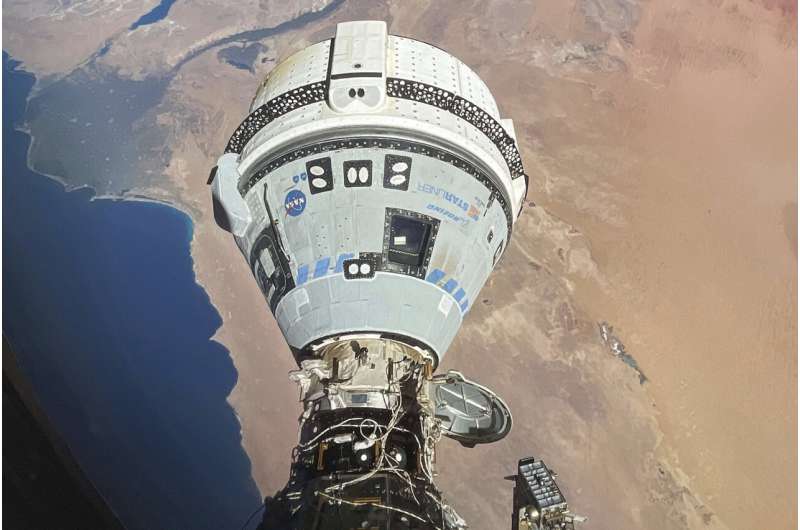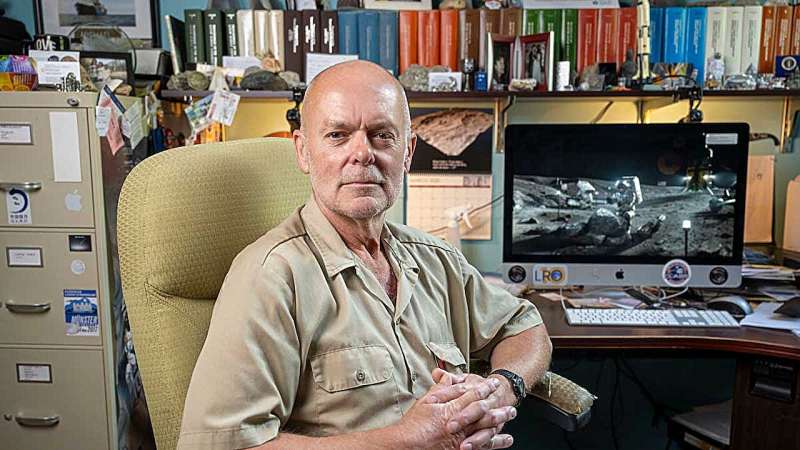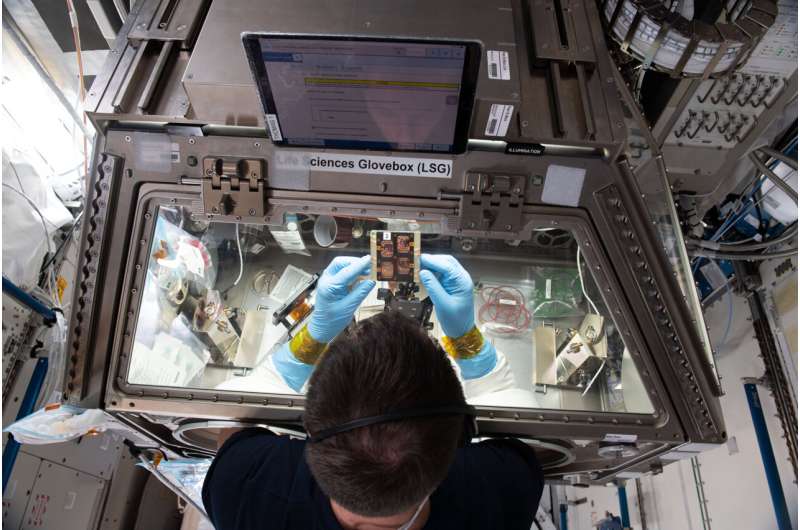
Copernical Team
UAH TERMINUS student group set to launch biggest, most advanced spacecraft with NASA
 This August, a student team at The University of Alabama in Huntsville (UAH), a part of the University of Alabama System, is set to launch its biggest payload yet into the upper atmosphere from the NASA Wallops Flight Facility on Wallops Island, Va.
The launch is part of NASA's RockSat Program, an initiative that aims to connect higher education students from across the United States with
This August, a student team at The University of Alabama in Huntsville (UAH), a part of the University of Alabama System, is set to launch its biggest payload yet into the upper atmosphere from the NASA Wallops Flight Facility on Wallops Island, Va.
The launch is part of NASA's RockSat Program, an initiative that aims to connect higher education students from across the United States with From Garuda to Pioneering Nepal's Space-Tech Industry
 In the Himalayan nation of Nepal, two innovators, Mohan Tamang and Akrit Dhungel, are making history with Mach24Orbitals, the country's first space-tech startup.
Previously, Dhungel and Tamang led the Garuda project, which launched Nepal's first rocket on March 20, 2021. This project earned the Nancy Squires Team Spirit Award at the Spaceport America Cup 2021. Using potassium nitrate and s
In the Himalayan nation of Nepal, two innovators, Mohan Tamang and Akrit Dhungel, are making history with Mach24Orbitals, the country's first space-tech startup.
Previously, Dhungel and Tamang led the Garuda project, which launched Nepal's first rocket on March 20, 2021. This project earned the Nancy Squires Team Spirit Award at the Spaceport America Cup 2021. Using potassium nitrate and s Star Catcher Secures $12.25M Seed Funding to Revolutionize Space Energy
 Star Catcher Industries, Inc. ("Star Catcher"), a leader in space-based energy generation, has successfully closed a $12.25 million seed funding round. The funding round was co-led by Initialized Capital and B Capital, with significant participation from Rogue VC. This investment will enable the company to build the Star Catcher Network, the world's first space-based energy grid, aimed at elimin
Star Catcher Industries, Inc. ("Star Catcher"), a leader in space-based energy generation, has successfully closed a $12.25 million seed funding round. The funding round was co-led by Initialized Capital and B Capital, with significant participation from Rogue VC. This investment will enable the company to build the Star Catcher Network, the world's first space-based energy grid, aimed at elimin NASA continues to delay return of Boeing Starliner, astronauts from ISS
 There still is no return date set for the Starliner astronauts aboard the International Space Station, officials with NASA and Boeing said Thursday.
NASA Commercial Crew Program Manager Steve Stich in a conference call Thursday morning said the agency has made significant progress in assessing the Starliner's return capability but there is no official plan to bring the astronauts home.
There still is no return date set for the Starliner astronauts aboard the International Space Station, officials with NASA and Boeing said Thursday.
NASA Commercial Crew Program Manager Steve Stich in a conference call Thursday morning said the agency has made significant progress in assessing the Starliner's return capability but there is no official plan to bring the astronauts home. SpaceX cleared to launch Falcon 9 rocket again
 SpaceX's stalwart Falcon 9 rocket has been cleared for launch after experiencing a rare failure earlier this month, officials said Thursday.
The rocket, a prolific launch vehicle that propels both satellites and astronauts into orbit, experienced an anomaly during a launch on July 11 in its second stage booster that meant it failed to deploy 20 Starlink satellites at a high enough altitude,
SpaceX's stalwart Falcon 9 rocket has been cleared for launch after experiencing a rare failure earlier this month, officials said Thursday.
The rocket, a prolific launch vehicle that propels both satellites and astronauts into orbit, experienced an anomaly during a launch on July 11 in its second stage booster that meant it failed to deploy 20 Starlink satellites at a high enough altitude, Gilmour Space to Start Hypersonic Flight Tests in 2025
 Gilmour Space Technologies, an Australian launch services company, has announced a new suborbital flight test service targeted at commercial and defense customers needing hypersonic speeds above Mach 5.
"We've witnessed a surge in the research and development of hypersonic vehicles, materials, and other related technologies in recent years, especially since AUKUS (a trilateral security par
Gilmour Space Technologies, an Australian launch services company, has announced a new suborbital flight test service targeted at commercial and defense customers needing hypersonic speeds above Mach 5.
"We've witnessed a surge in the research and development of hypersonic vehicles, materials, and other related technologies in recent years, especially since AUKUS (a trilateral security par Earth from Space: Paris in focus
 Image:
This striking high-resolution image offers an in-depth view of central Paris, allowing you to explore and zoom into the city’s most captivating areas in exceptional detail.
Image:
This striking high-resolution image offers an in-depth view of central Paris, allowing you to explore and zoom into the city’s most captivating areas in exceptional detail. NASA says no return date yet for astronauts and troubled Boeing capsule at space station

Already more than a month late getting back, two NASA astronauts will remain at the International Space Station until engineers finish working on problems plaguing their Boeing capsule, officials said Thursday.
Test pilots Butch Wilmore and Suni Williams were supposed to visit the orbiting lab for about a week and return in mid-June, but thruster failures and helium leaks on Boeing's new Starliner capsule prompted NASA and Boeing to keep them up longer.
NASA's commercial crew program manager Steve Stich said mission managers are not ready to announce a return date.
Expert Q&A: NASA's cancellation of VIPER is a frustrating setback for lunar exploration

In July 2024, NASA announced it canceled its plans to send the Volatiles Investigating Polar Exploration Rover (VIPER) to the moon's southern polar region. The rover was meant to search for water and other resources called volatiles, such as hydrogen, ammonia and carbon dioxide, which easily evaporate in warm temperatures.
Nicola Fox, associate administrator of NASA's Science Mission Directorate, reiterated the agency's commitment "to exploring the moon for the benefit of humanity" through other missions.
Fifty-five years have passed since Neil Armstrong and Buzz Aldrin made a giant leap for mankind.
Space-trekking muscle tests drugs for microgravity-induced muscle impairment

A gentle rumble ran under Ngan Huang's feet as a rocket carrying her research—live, human muscle cells grown on scaffolds fixed on tiny chips—lifted off, climbed, and disappeared into the sky to the International Space Station National Laboratory. These chips would help Huang better understand muscle impairment, often seen in astronauts and older adults, and test drugs to counter the condition.
Now, the results are back. Reporting in a study published July 25 in Stem Cell Reports, Huang's team showed that space-traveling muscle had metabolic changes that indicate impaired muscle regeneration and gene activities associated with age-related muscle loss called sarcopenia. But drug treatment partially prevented microgravity's adverse effects.
"Space is a really unique environment that accelerates qualities associated with aging and also impairs many healthy processes," says Huang, an associate professor at Stanford University.
"Astronauts come back with muscle atrophy, or a reduction of muscle function, because the muscle isn't being actively used in the absence of gravity.

